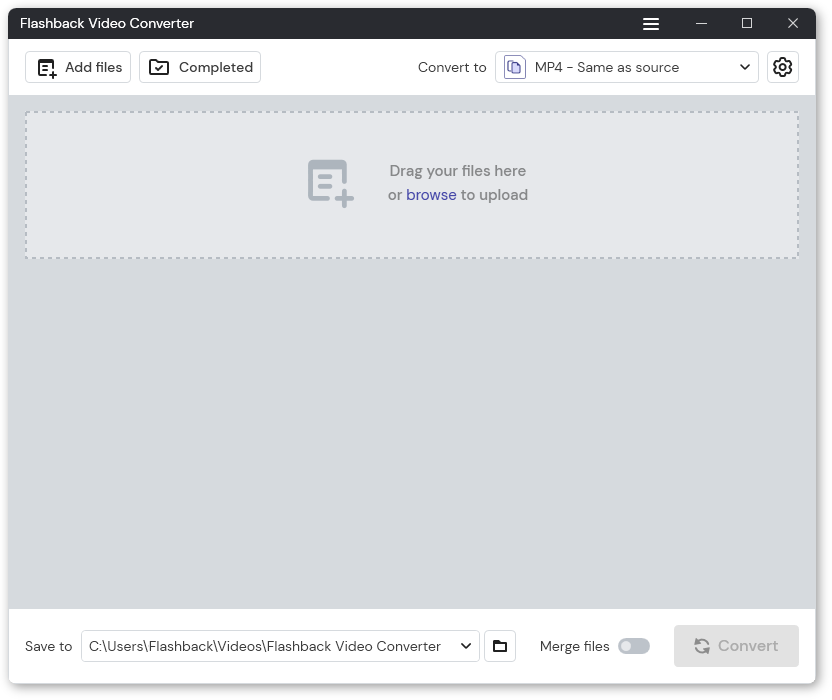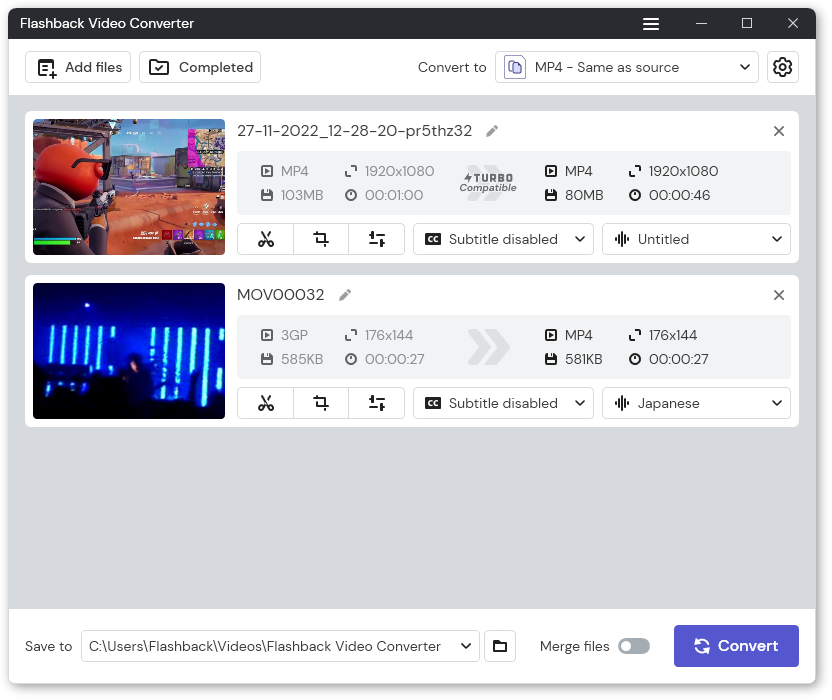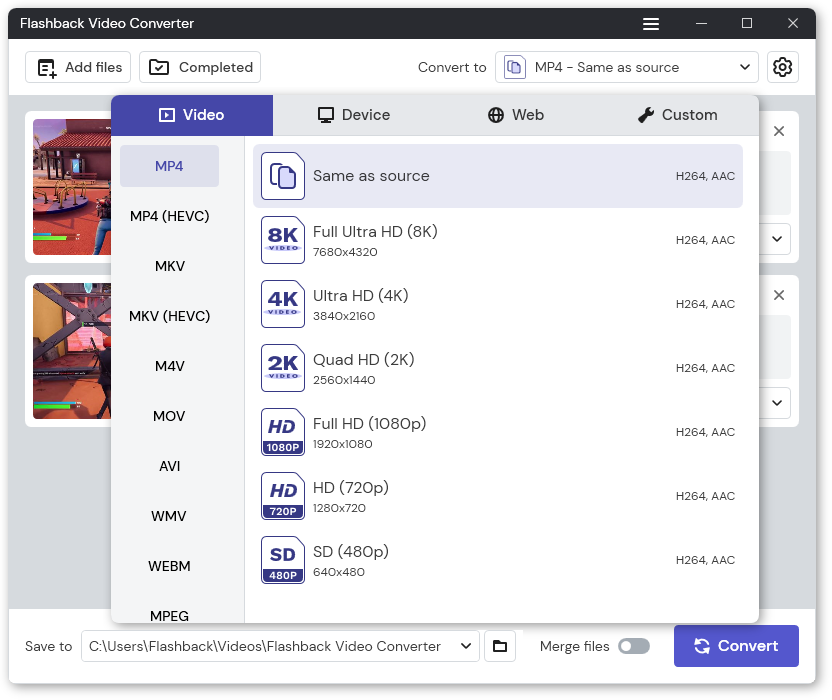Flashback Express 7
User Manual
Downloading and Installing
Recording a Video
Recorder Window
Recorder Settings
Selecting What To Record
Recording the Mouse Cursor
Starting and Stopping Recording
Recorder Control Bar
Advanced Recording Options
Annotating While Recording
Recording on a computer with dual GPUs
Previewing a Recording
Editing a Project
Editing Basics
Navigating the Project Editor
Working with Media
The Timeline
The Video Canvas
Styling Media
Editing Preferences
Exploring Media
Videos
Images
Animations
Shapes
Backgrounds
Text
Titles
Audio
Voiceovers
Subtitles
Blurs
Flashback Pro Movies
Applying Effects
Exporting
Licensing Flashback Express 7
Free vs Licensed Use
Purchasing a Flashback Express 7 License
Registering a Flashback Express 7 license
Upgrading From Pro 5 or Express 6
Managing Your Subscriptions
Feature Credits
Registering on an offline PC
Deploying a license to multiple PCs
License Troubleshooting
Misc.
How To Guides
Make a clip from a recording
Replace a voiceover
Record a facecam video
Schedule a recording session
Highlight the mouse cursor
Edit audio for an imported video
How To Move a Project to a New Computer
Record a clear voiceover
Flashback Express 7 Quick Start Guide
Flashback Express 7 FAQs
Flashback Express 6
User Manual
Downloading and Installing
Getting Setup to Record
The Recorder Window
Recording the Screen
Recording Windows and Regions
Recording Sound
Recording a Webcam
Recording the mouse cursor
Recording Settings
Recording
The Recorder Control Bar
Starting, Pausing and Stopping a Recording
Discarding or Restarting a Recording
Saving your recording
Scheduling a recording
Auto-trimming
Editing and Uploading
The Video Window
The Edit & Upload Window
Making a Clip
Uploading a Video
Exporting to other formats
Exporting Audio
Adding Subtitles
Licensing
Flashback Express Free vs Licenced
Purchasing a Flashback Express 6 license
Registering a Flashback Express 6 license
Registering Flashback Express 6 on an offline PC
Deploying a Flashback Express 6 license to multiple PCs
Flashback Express License 6 Troubleshooting
Feature Credits for Transcrptions
Misc.
How To Guides
How to record a facecam video
How to make a clip
How to schedule a recording session
How to capture the mouse cursor
Flashback Express 6 Quick Start Guide
Flashback Express 6 FAQs
Camigo
User Manual
Getting Started
Camigo System Requirements
Downloading and installing
Setting up Camigo
Checking for Updates
Camigo Settings
Using Camigo
Customizing your video
Licensing
Support
Camigo Quick Start Guide
Camigo FAQs
Video Converter
User Manual
Getting Setup
Video Converter System Requirements
Downloading and installing Video Converter
Preferences
Free Trial
Using Video Converter
Converting Format
Format settings
Turbo Conversion
Creating Clips
Cropping a video
Applying Effects
Adding Watermarks
Changing Speed
Inserting Subtitles
Licensing Video Converter
Video Converter Quick Start Guide
Video Converter FAQs
Table of Contents
- All Categories
- Video Converter
- User Manual
- Using Video Converter
- Converting Format
Converting Format
Updated
by Gareth Casey
The Converter Windows allows you to add video files, select the format that they will be converted into, merge videos and access some basic editing features.

Adding Files
You can add the video that you would like to convert either by clicking the Add files button or by simply dragging the files into the Converter Window. If you want to convert multiple files, you can bulk add them in one go.
For each file that is added, a preview thumbnail will be displayed along with details about the format, resolution, file size and duration for both the original file and for the new file that it will be converted into.
When converting an MP4, MKV, M4V or MOV file into any of these 4 formats using the Same as Source option, the Turbo Compatible indicator may appear. Turbo Compatible videos can be converted much faster than other videos. See Turbo Conversion for more details

Clicking the X button will remove unwanted videos from the video list.
Video Details
Any video that has been added, can be previewed by clicking on the thumbnail image. The video will then open in a playback window.
Next to the preview thumbnail, you will see the the format, resolution, file size and duration for both the original file and for the new file that it will be converted into. The Turbo Compatible indicator will also appear if Turbo Conversion is available for the video.

The  button lets you edit the name that will be used for the converted file. By default, the original file name will be used.
button lets you edit the name that will be used for the converted file. By default, the original file name will be used.
The  button opens the Clips window where you can cut the video in clips or delete sections. See Creating Clips for more details.
button opens the Clips window where you can cut the video in clips or delete sections. See Creating Clips for more details.
The  button opens the Cropping window where you can crop down the video image, change the aspect ratio of the video or rotate the image. See Cropping a Video for more details.
button opens the Cropping window where you can crop down the video image, change the aspect ratio of the video or rotate the image. See Cropping a Video for more details.
The  button opens the Effects window where you can adjust the colors of the video, apply filters, add a watermark or subtitles and change the speed. See Applying Effects for more details.
button opens the Effects window where you can adjust the colors of the video, apply filters, add a watermark or subtitles and change the speed. See Applying Effects for more details.
The subtitles dropdown menu allows you to import subtitles from a file or select a subtitles file that has already been added. See Inserting Subtitles for more details.
The audio dropdown down alows you to select the audio track that will be used or to convert without audio.
Format Settings
Clicking the Convert to dropdown menu allows you to select the format that you convert to.
Each format has a selection of pre-defined video settings suitable for playback on different devices or for uploaded to popular online platforms, or you can convert using the same video settings as the original file by selecting the Same as source option for your choosen format.
The video and audio encoder used for each format is displayed on the right of the dropdown.

Alternatively, if none of the preset options are suitable, clicking the  button allows you to make more in-depth customization of the video settings, such as encoders, frame rate and quality. See Format settings for more details.
button allows you to make more in-depth customization of the video settings, such as encoders, frame rate and quality. See Format settings for more details.
Conversion Settings
By default, converted videos will be saved to \Videos\Flashback Video Converter\.
A different location can be selected by clicking the  button.
button.

Normally, one video will be created for each file that has been added to the list. However, if you have added multiple files to the list of videos, enabling the Merge files option will create a single file that contains all of the videos added together in the order that they were added to the list.
Converting
Clicking the Convert button will begin the conversion process. Each video that has been added will be converted one at a time beginning with the first video in the list.
Conversion can be stopped at any time by clicking the Stop Conversion buttons.
When conversion is complete, the converted files will be added to the Converted Files window which gives quick access to your videos. The Converted Files window can be opened at any time by clicking the Completed button.
